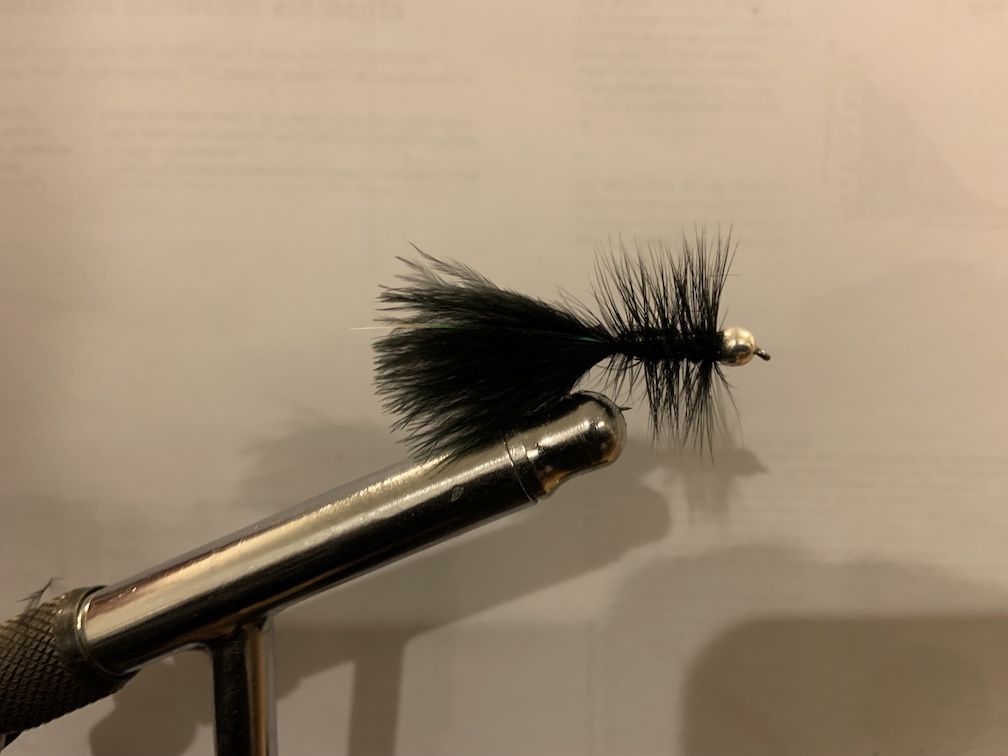
What you’ll need:
- Black thread
- Lead-free wire (0.025” diameter)
- Size 8 streamer hooks (ideally turned eye, bonus points for barbless)
- 3/16” tungsten beads
- Black marabou
- Black saddle hackle
- Black dubbing
- Pearl flash
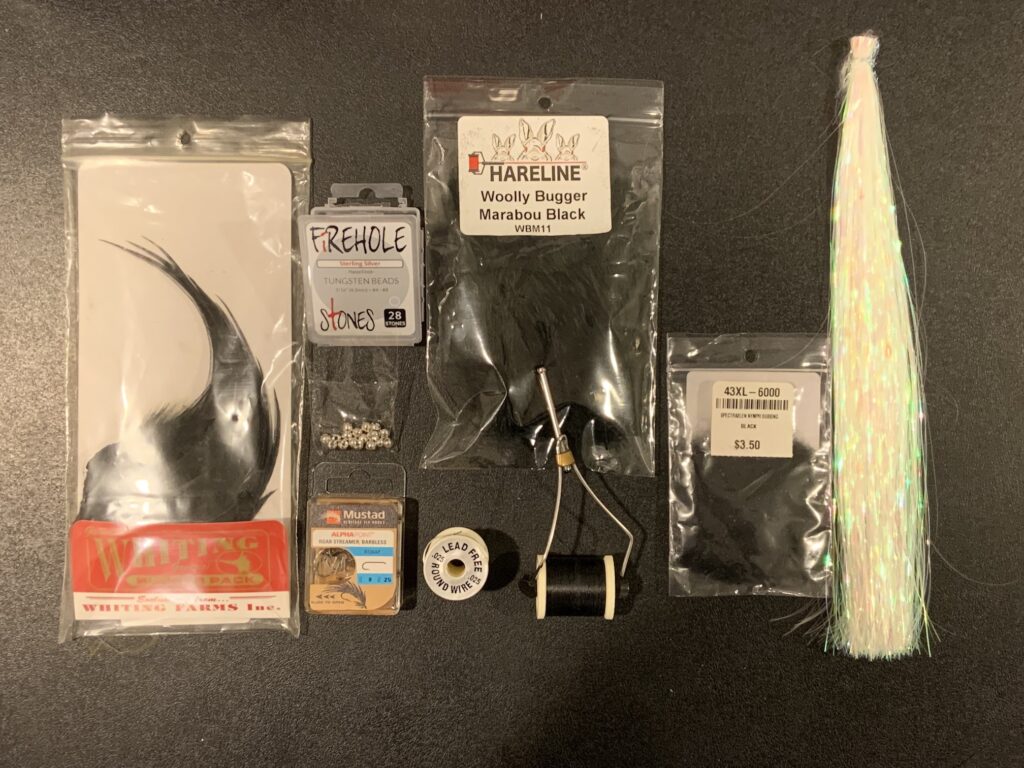

A couple notes on the materials used here. First, when I buy hackle, I always go with Whiting Farms. Although Whiting Farms hackle is on the pricy side, the quality is far superior to any other hackle brands I’ve tried. With the cheaper brands, I find that I end up not even being able to use 2/3 or more of the feathers because they’re too short or don’t even have any good useable length at all. Here, I’m using the Whiting Farms bugger pack (black), in which almost all the feathers are usable, with most being far longer than I need to wrap the body of the bugger. There are so many good feathers I often feel bad using them because I often get to the end of the hook with half the feather still left! I’ve been using the same hackle pack for about five years, and at this rate, it’ll last me another ten.
For the body, I like to use dubbing instead of chenille because dubbing provides me better control over the body thickness. I also find that it looks a bit cleaner than chenille. Black chenille is totally fine to use for the body and is probably a bit easier to use for beginners. I also like to add two strands UV crystal flash (one on either side running the entire length of the fly) to give the fly extra ability to catch the fish’s attention, but this is optional. I’m using black bugger marabou here, but any black marabout should work fine. Finally, this pattern can easily be converted into an egg sucking leach via the use of an orange tungsten bead. However, I don’t typically use beads other than natural colors because I find the painted beads don’t last very long due to the paint chipping off when the fly hits rocks.
Let’s get into the tie.
Thread a 3/16” tungsten bead onto the size 8 streamer hook. Make sure the bead is oriented correctly (smaller hole toward the eye, larger bevel toward the hook shank). Having a downturned eye isn’t necessary but helps in cases where the through hole in the bead is a bit wide and eats up some of the eye of the hook.
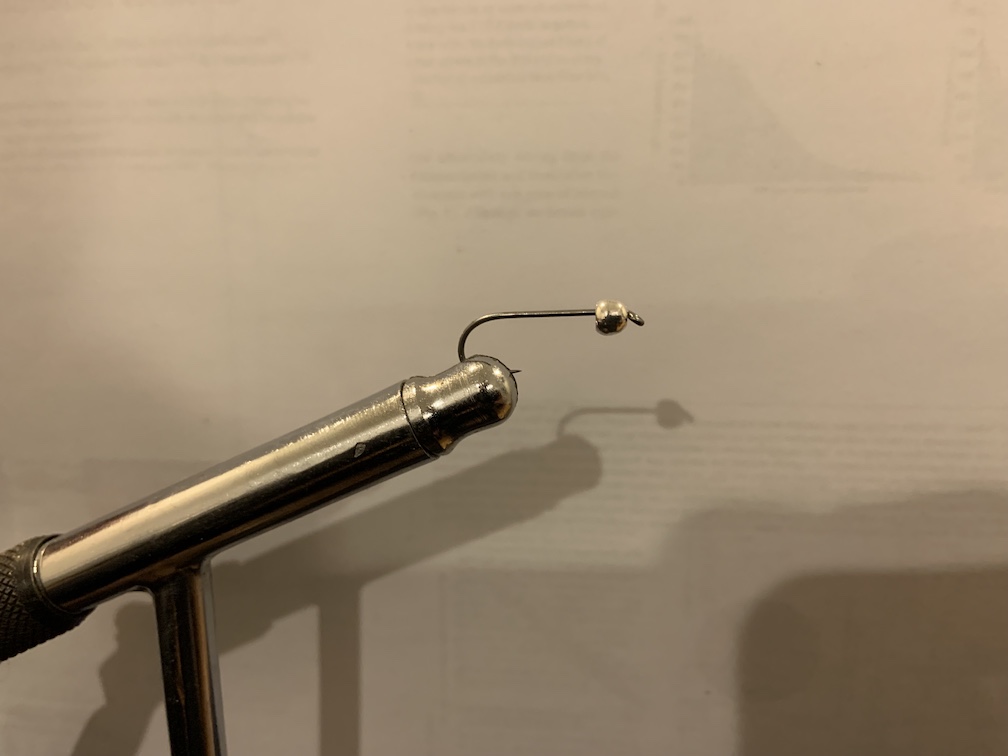

Next, add 10-14 wraps of lead-free wire. There’s no magic number, but I usually use around 12 wraps.
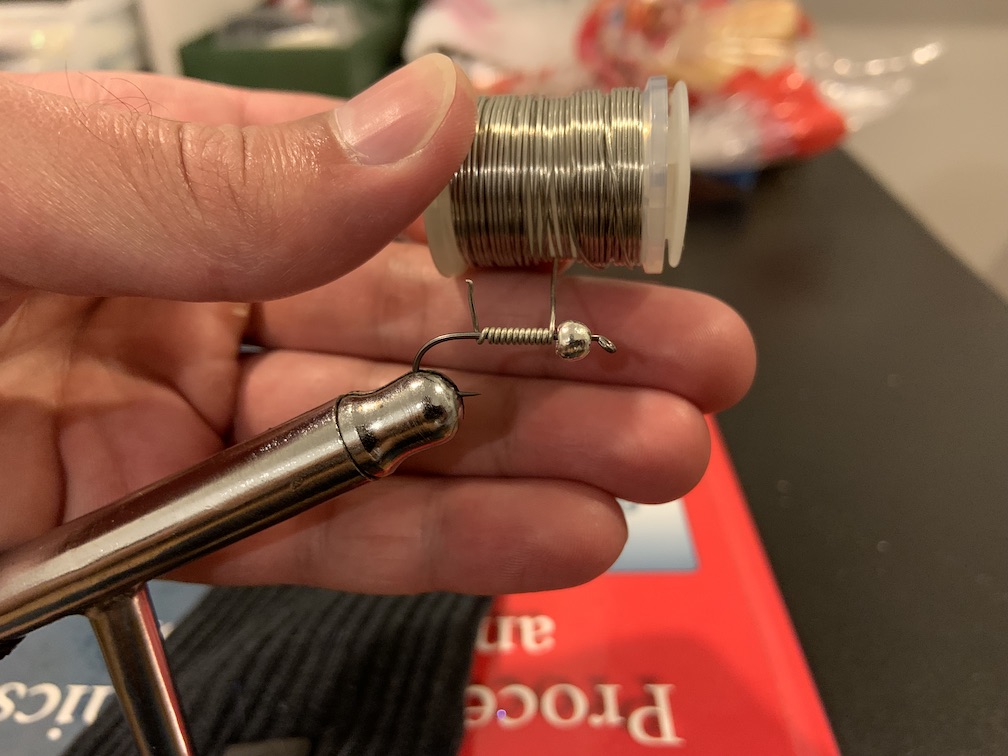

Push the wire up snug against the bead. Note: if the bead crowds the eye of the hook, you’ll need to back the wire wrap off the bead a bit and move the bead a bit farther away from the eye. This can usually be avoided if using a hook with a downturned eye.
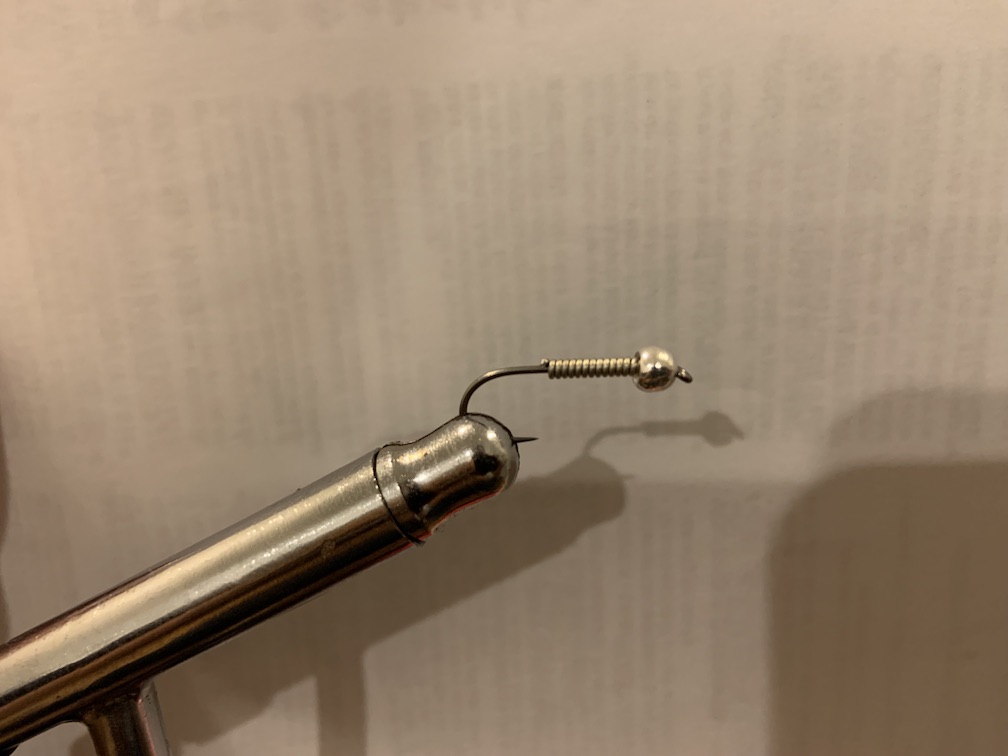

Secure the wire with several wraps of thread.
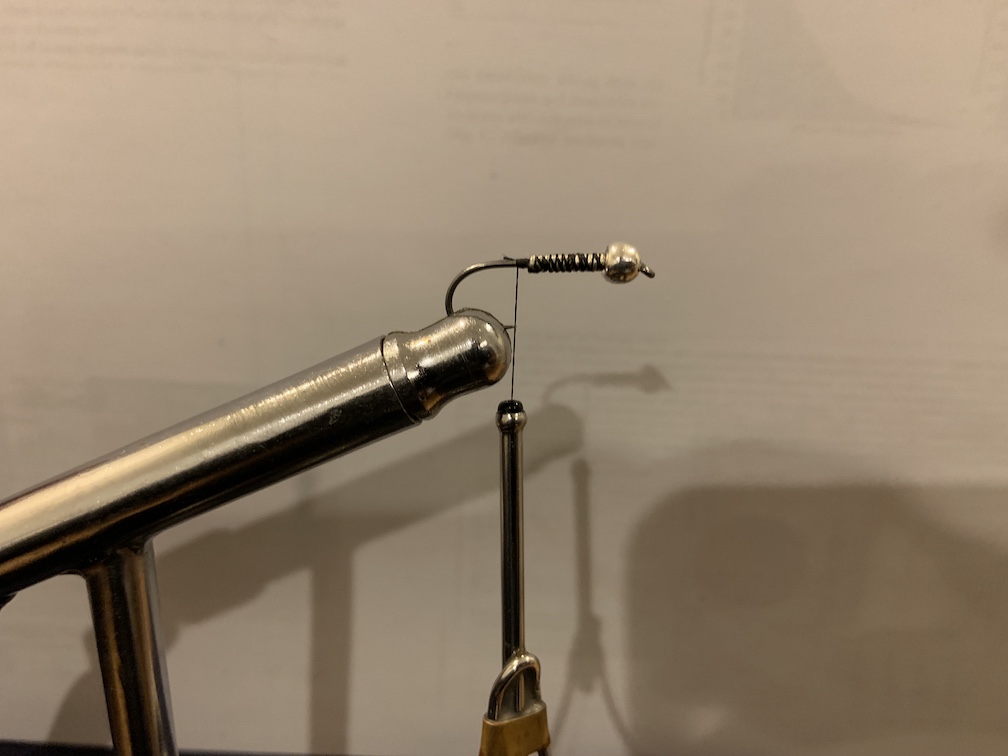

Now it’s time to tie in the marabou. Grab a feather that looks good and tie it onto the hook at about where the point of the hook is (below where your wire is wrapped). When tying in the marabou, I like to have the length of the marabou about equal to the length of the hook itself or just a bit shorter. Trim off the excess feather that is toward the head of the fly.
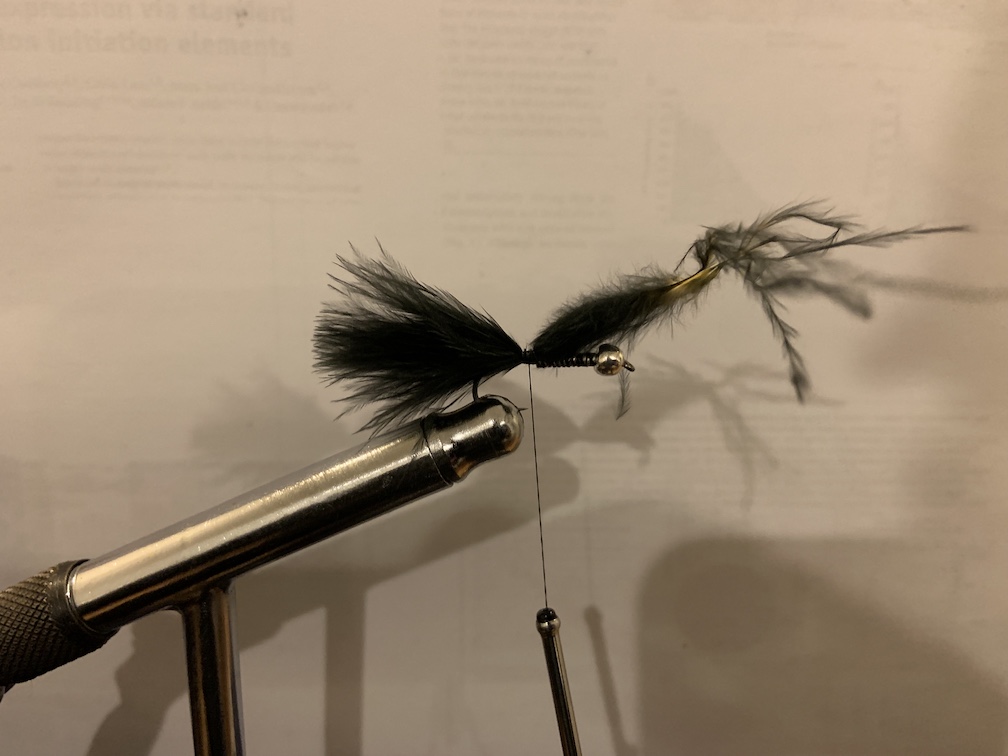

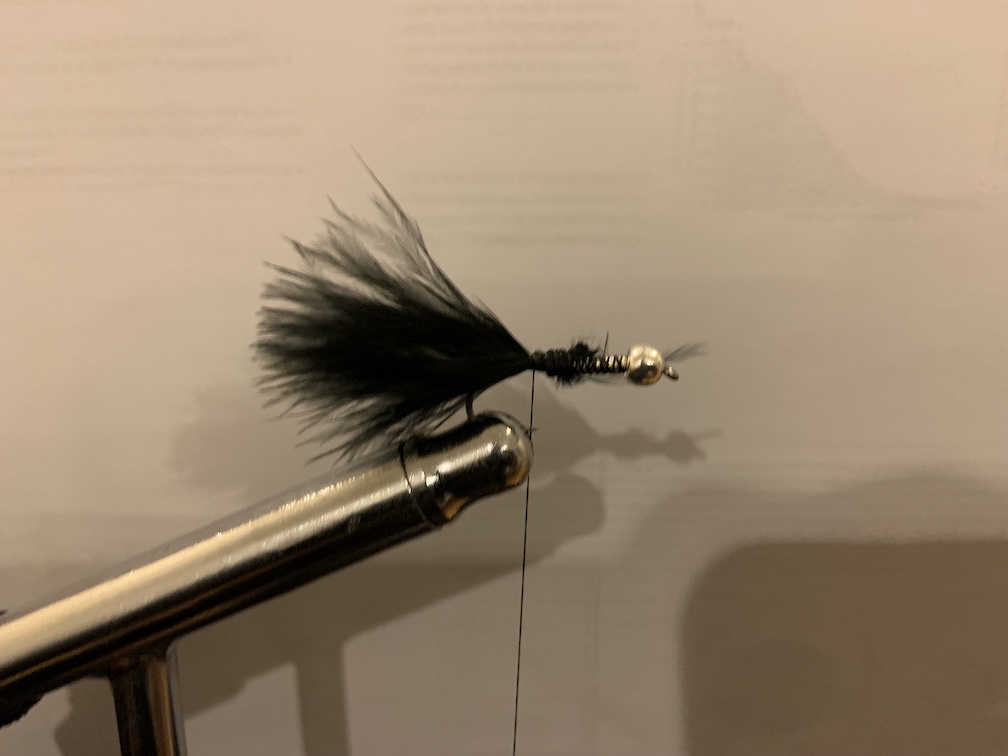

Now it’s time to make the body. To do this, spin a pinch of dubbing onto the thread by pinching it between your fingers and twisting. This will allow you to create what looks like a much thicker thread. Once you’ve spun the dubbing, wrap the thread up the hook toward the bead. Repeat this process until you arrive at the bead.
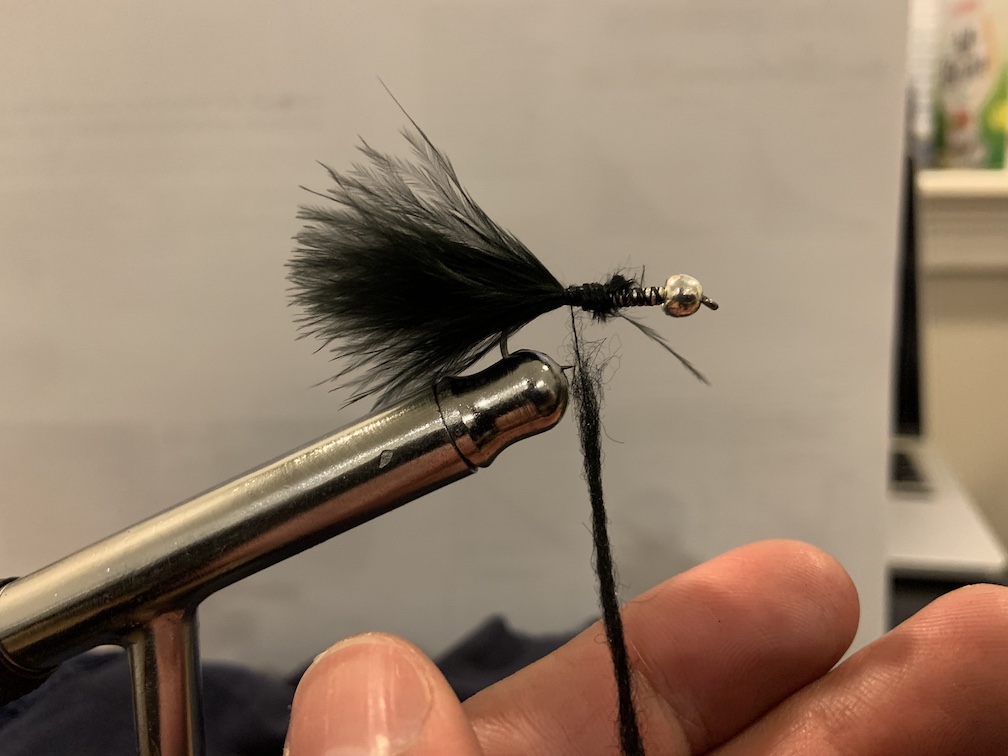

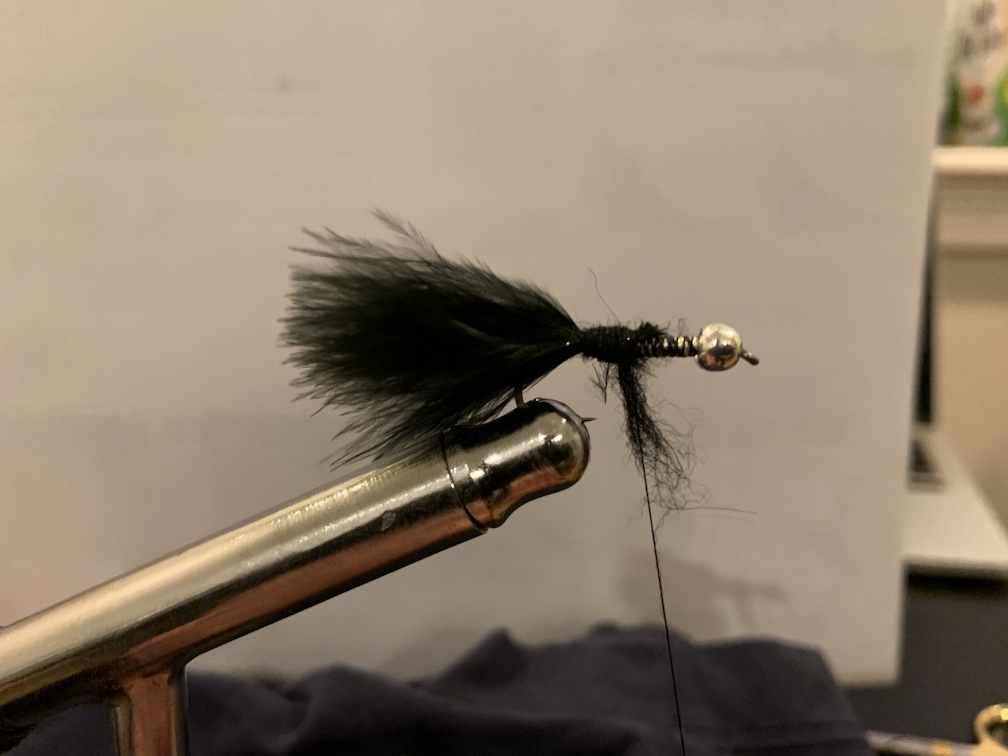

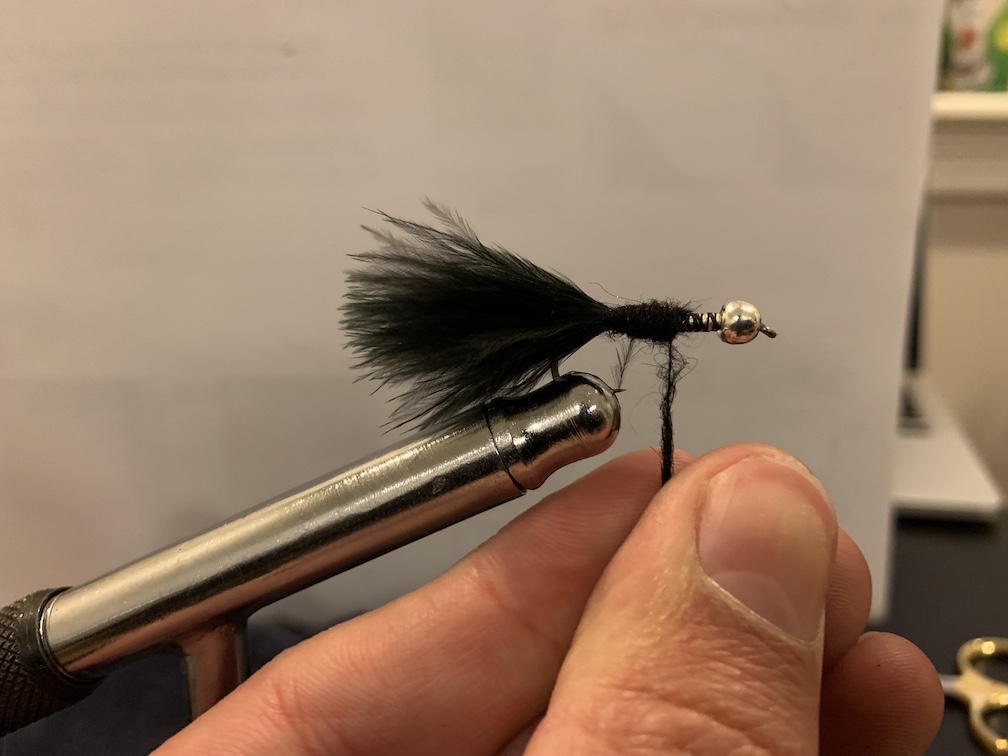

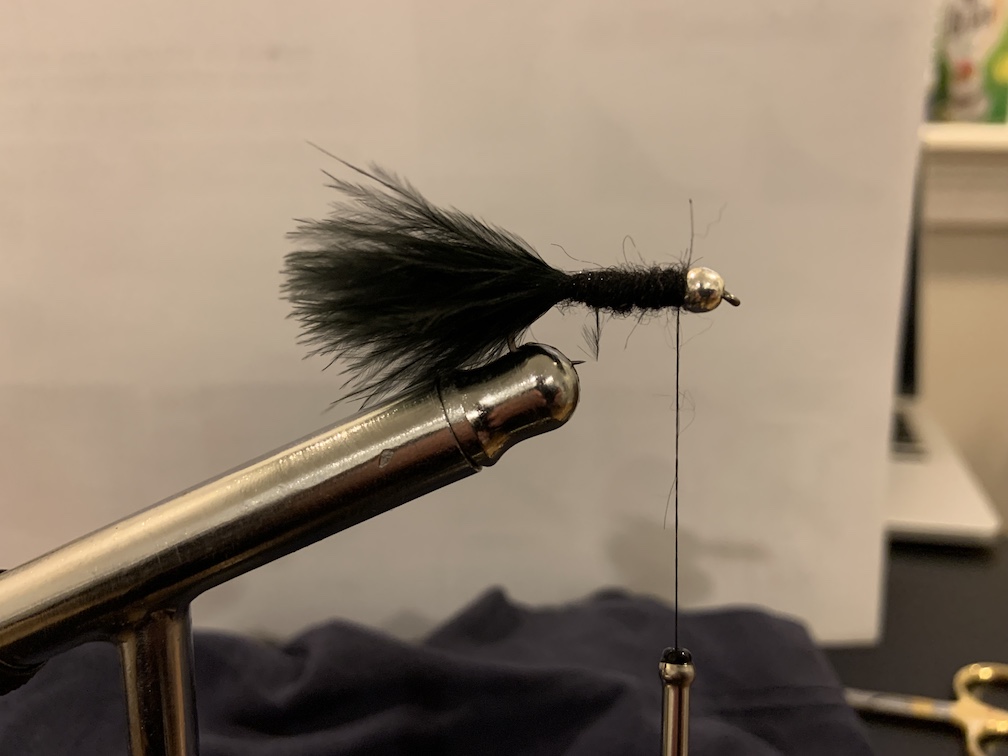

Now, tie in two strands of flash. When I do this, I tie each strand on either side of the fly and cut the strands to be as long as the fly itself (so that the end of the flash is at the end of the marabout tail).
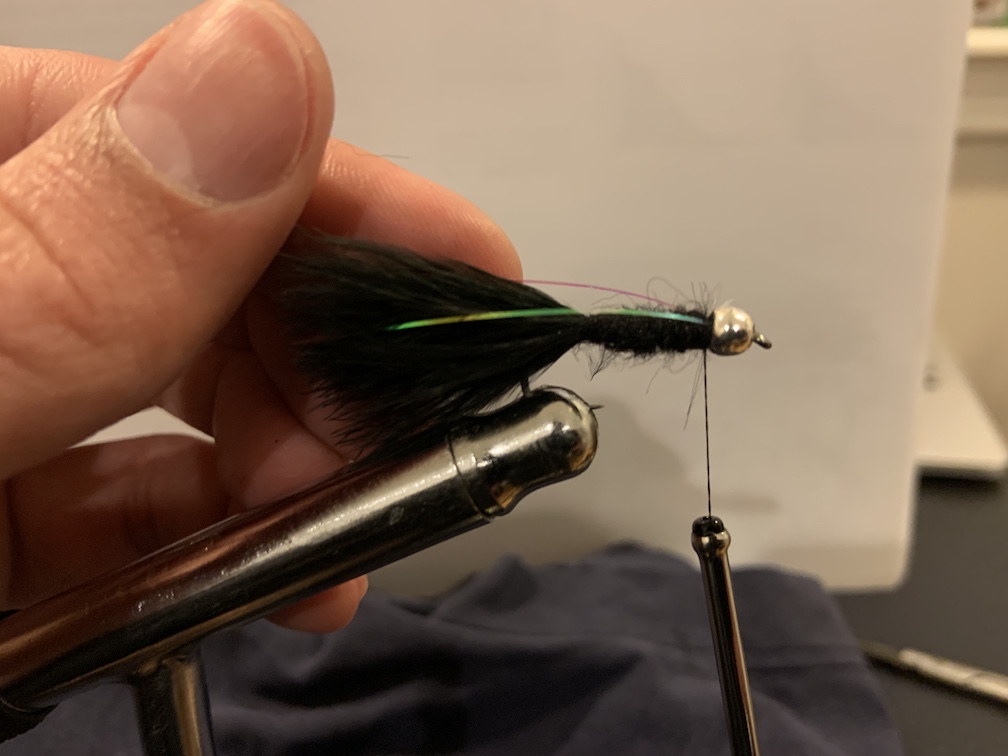

After you’ve tied in the flash, tie in the hackle. First, select a nice long feather, then trim off the fluffy end. Lay the tip of the feather right at the base of the bead, and tie it in with 3 – 4 wraps of thread.
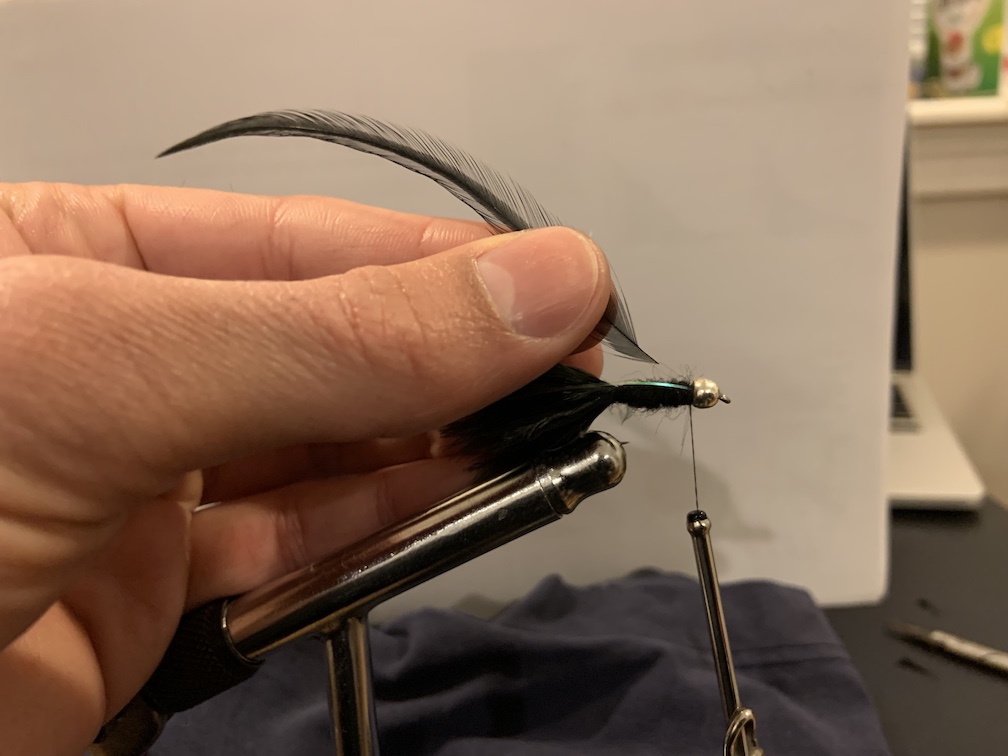

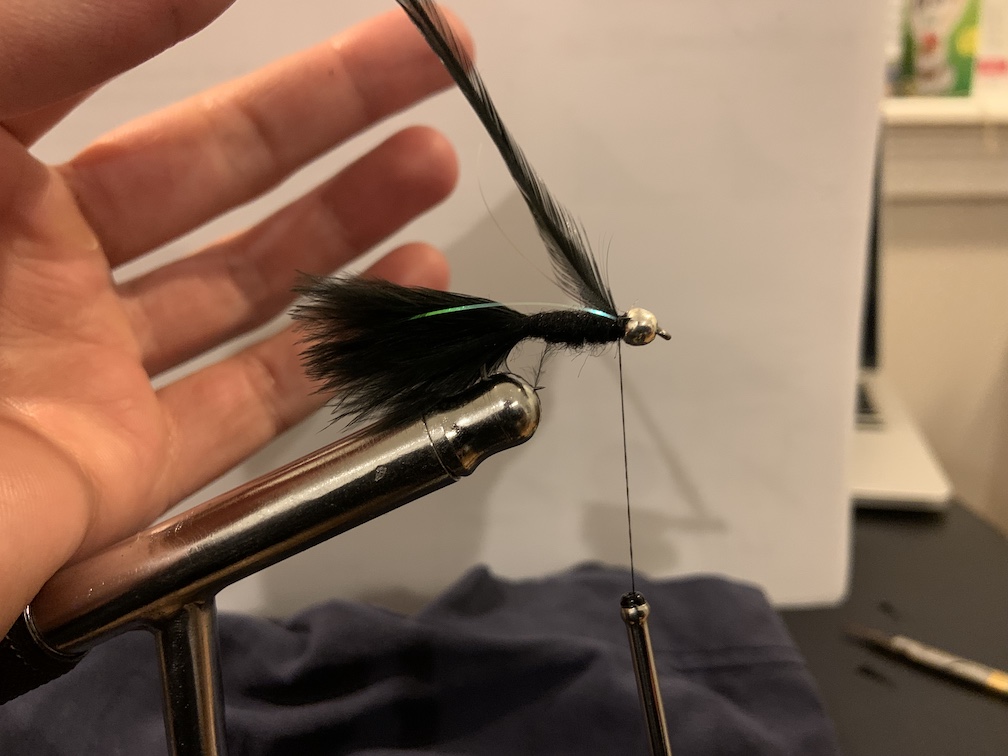

Now, make several wide wraps to move the thread to end of the body (near the point of the hook). This will tie the flash in securely and prepare you to counter-wrap the hackle.
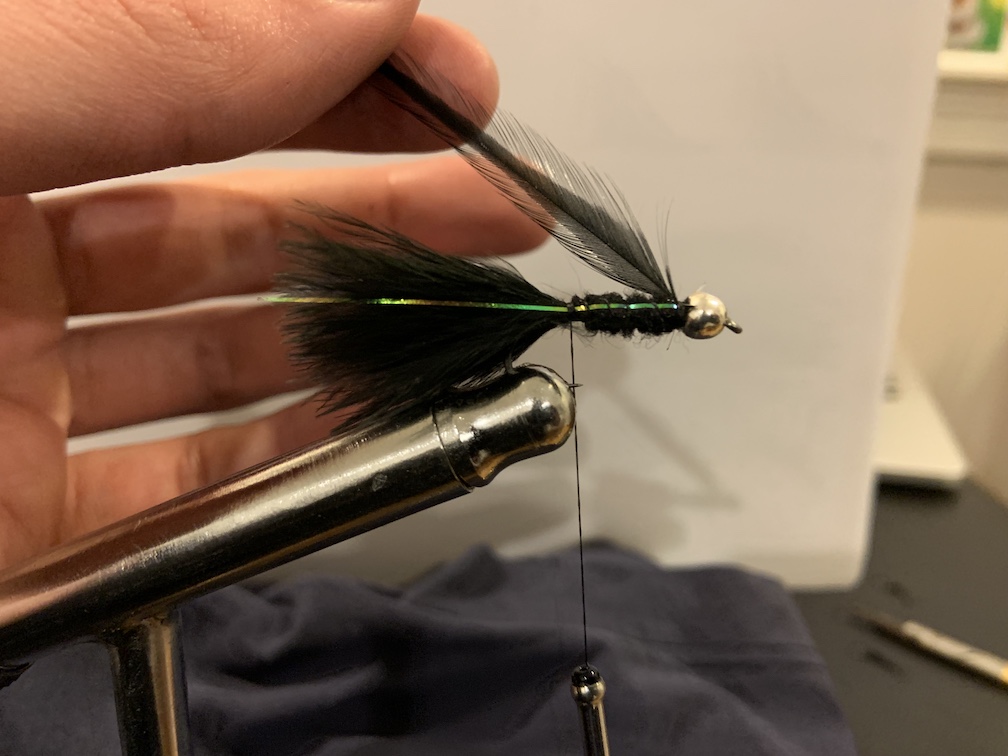

Now comes the trickiest part of the tie. Wrap the hackle down the body of the bugger. To do this, pinch the end of the feather with your fingers (or with hackle pliers) and wrap the feather down the hook (toward the tail) just like you would when wrapping thread. Adjust the spacing of your wraps to get a full body (but don’t space your wraps too closely or you’ll run out of feather!). This part takes practice, so don’t get upset if you make too many wraps and run out of feather. If you’re not satisfied when you get to the end of the body, simply unwrap the feather gently and try again. Your wraps should end where the end of the body is (and where the marabout tail starts).
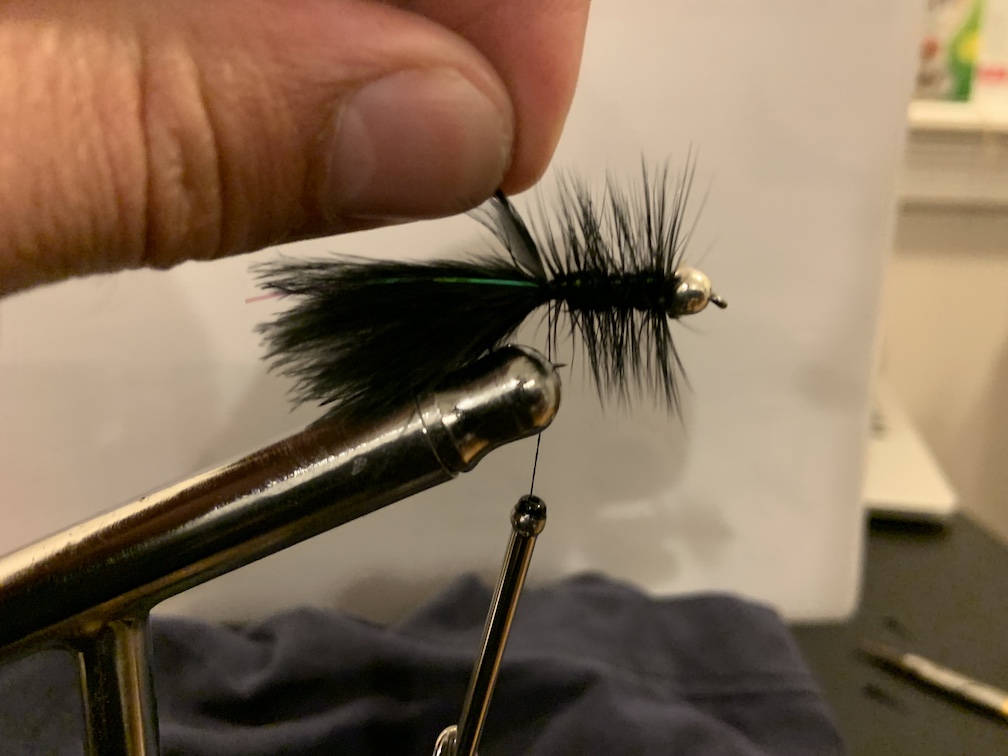

Once you’ve completed wrapping the hackle, tie it down with 3 – 5 wraps of thread and trim any excess feather.
Finally, make several wide wraps to bring the thread back to the head of the fly (at the bead). To do this, try and work the thread through the hackle and brush the hackle with your fingers to help keep it from getting tied down by the thread.
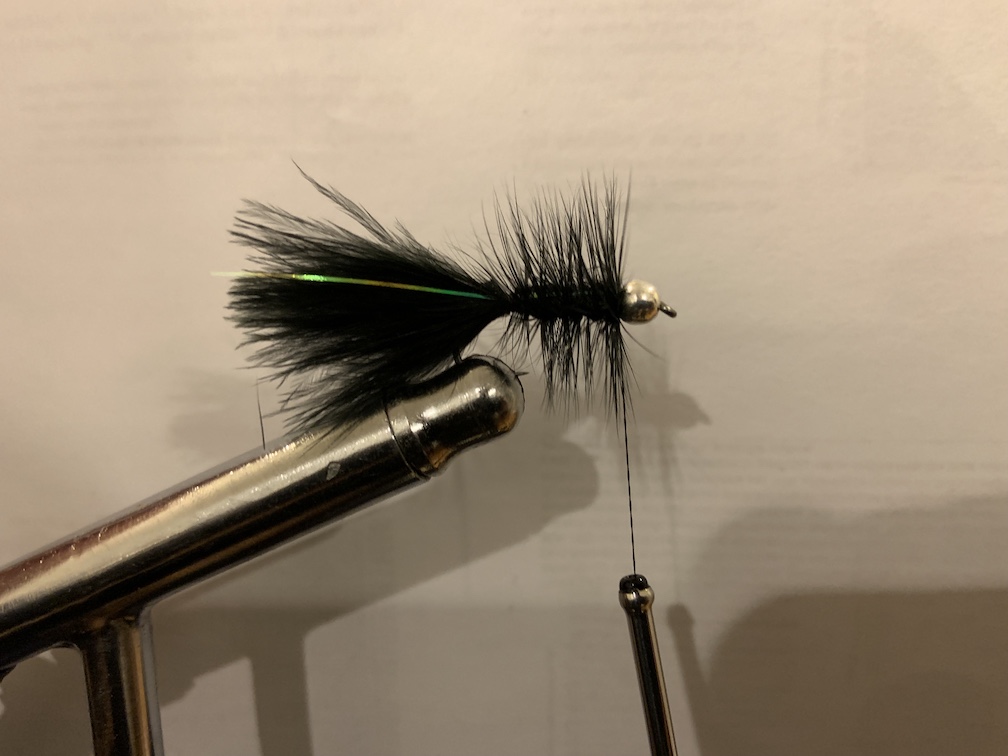

Once you’ve made it to the bead, finish off with a couple whip finished and voila, you now have a woolly bugger!



